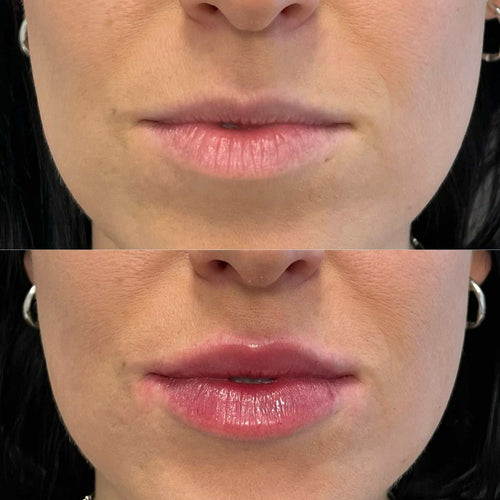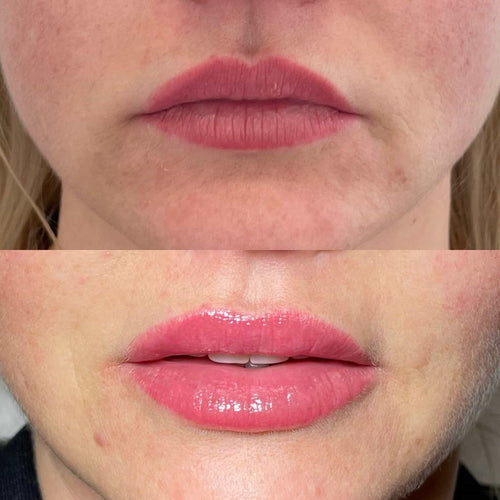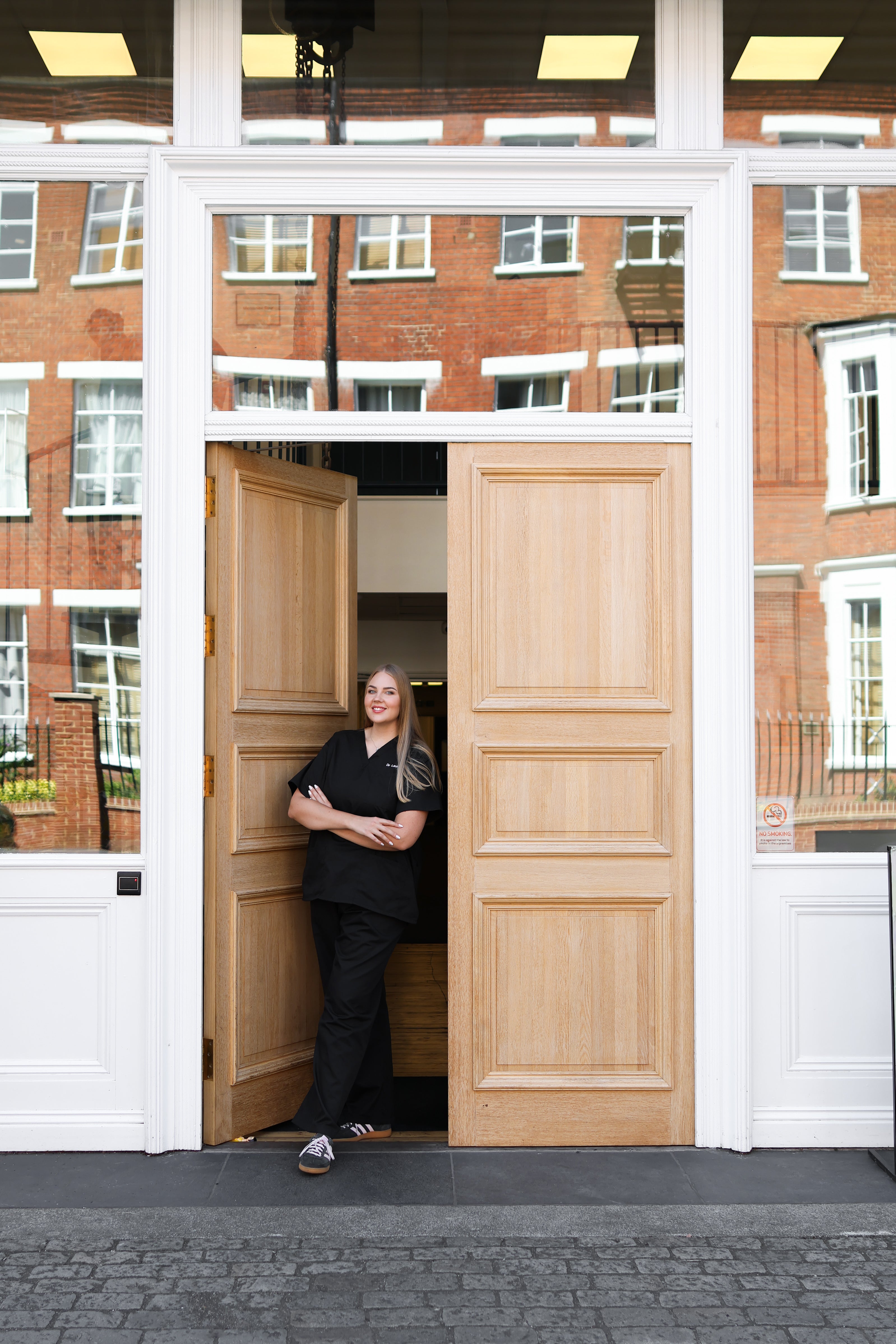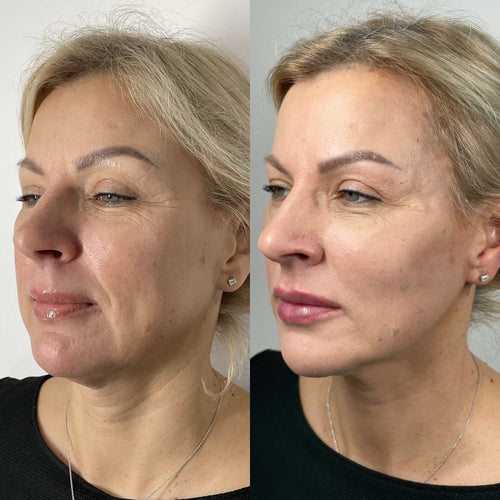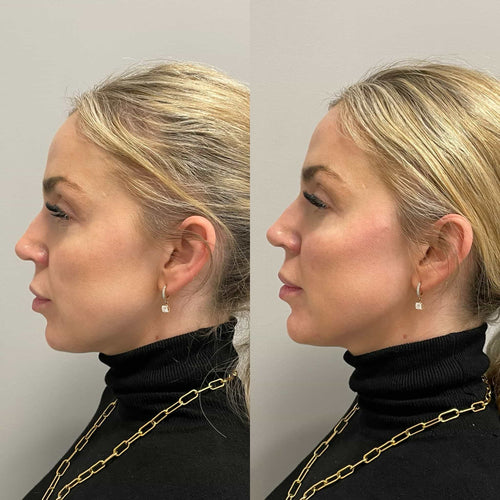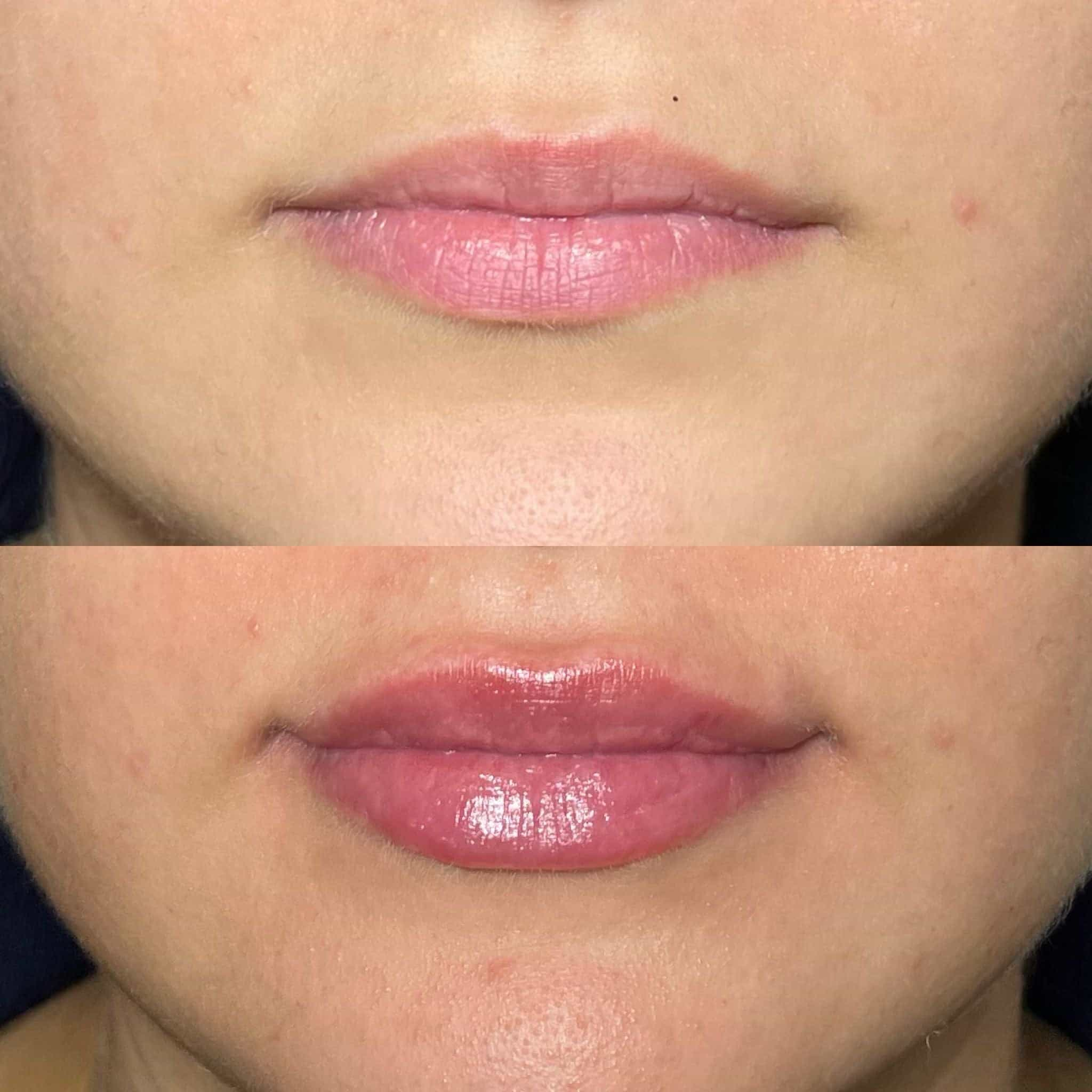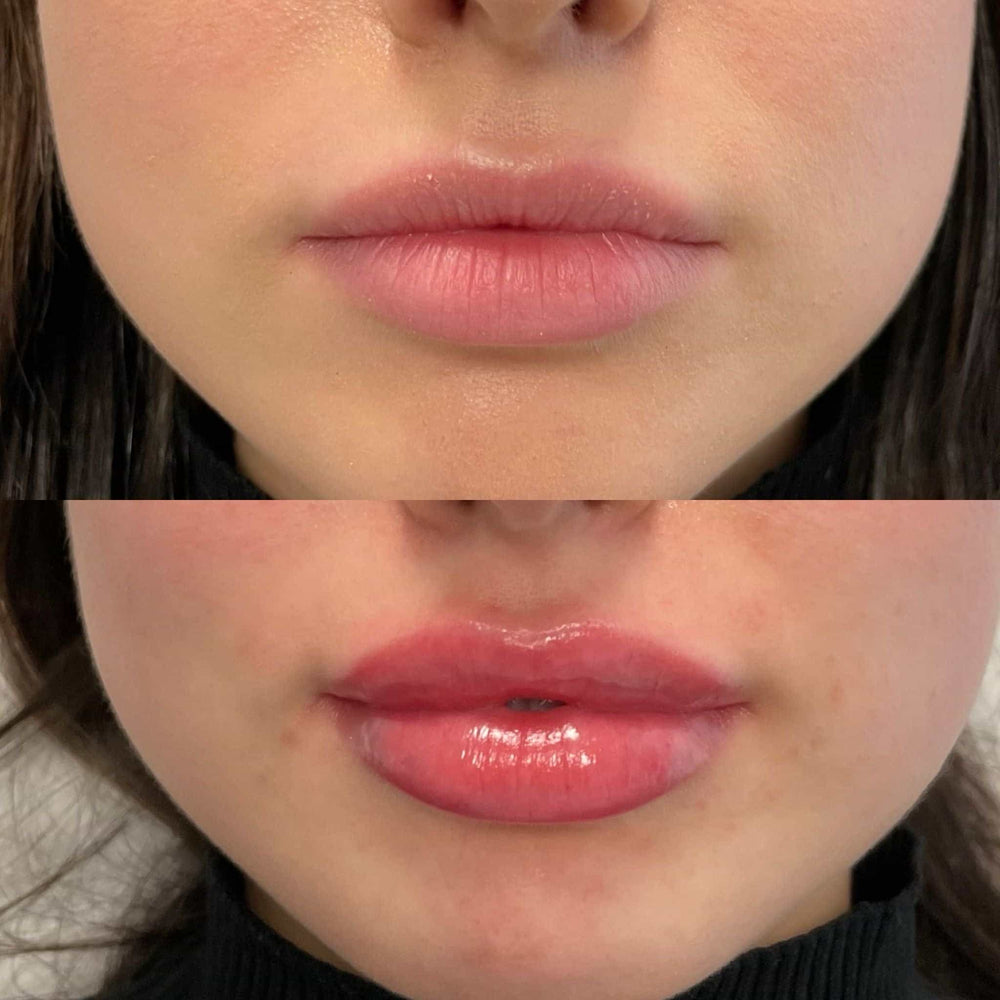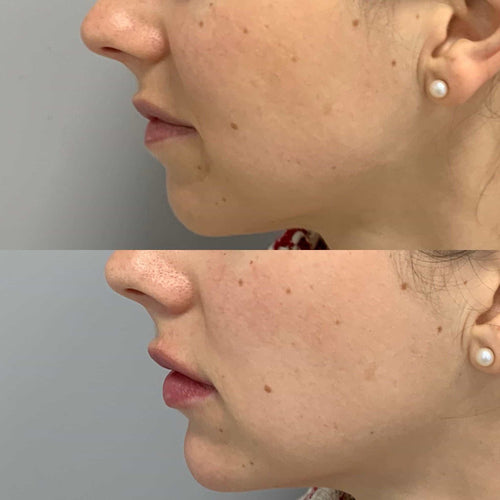How Bad Does Lip Filler Hurt
Book a Dermal Filler Consultation with Dr. Laura Geige at It’s Me and You Clinic
Pain Perception after Lip Filler Injections
Immediate Post-Injection Discomfort
Pain perception after lip filler injections can vary from person to person, but it’s common for individuals to experience some level of discomfort immediately following the procedure.
Discomfort after lip fillers typically peaks within 24 hours and subsides within 3-5 days, with some people reporting mild soreness that can be managed with over-the-counter pain medication such as ibuprofen or acetaminophen.
During the initial stages of recovery, individuals may feel a sharp, stinging sensation or a dull ache in the treated area, which is usually more pronounced when biting down or moving the lips.
This discomfort can be attributed to several factors, including swelling, inflammation, and the natural healing process. Swelling typically subsides within 2-3 days, while inflammation can take up to a week to resolve.
It’s worth noting that some individuals may experience more intense pain or sensitivity, particularly if they have sensitive skin or are taking certain medications that can increase the risk of bruising or bleeding.
Factors such as the type and brand of filler used, needle size, injection technique, and individual pain tolerance can all impact the level of discomfort experienced after lip filler injections.
A commonly cited estimate is that up to 30% of individuals may experience some degree of pain or discomfort after fillers, with mild cases being more common than severe ones.
Despite the potential for temporary pain, most people find that the benefits of lip fillers, including improved aesthetics and increased confidence, outweigh any initial discomfort.
In fact, many patients describe their lip filler procedure as relatively quick and relatively painless, with some even referring to it as a “minor pinprick” or “a quick jab.”
Professional practitioners usually take steps to minimize discomfort by using numbing agents, adjusting injection angles, and injecting small amounts of filler at a time.
Additionally, some patients may prefer the use of topical anesthetics, such as lidocaine or benzocaine, applied to the treatment area before the procedure to reduce sensation during the injections.
While pain is not usually a significant concern for most individuals after lip filler injections, it’s essential to discuss any concerns or anxiety with a qualified practitioner before undergoing the procedure.
This allows them to tailor their approach to individual needs and provide personalized guidance on managing potential discomfort.
Lip filler injections can cause temporary discomfort, swelling, and pain at the injection site, which can be managed with over-the-counter pain medication.
The severity of pain after lip filler injections varies from person to person and depends on several factors, including the type of filler used, the location and number of injections, and individual tolerance to pain.
Some common symptoms reported by individuals after lip filler injections include stinging, pinching, or burning sensations at the injection site, which can be mild to moderate in intensity.
Aestheticians and healthcare professionals may use various techniques to minimize discomfort during lip filler injections, such as using a cold compress, applying topical anesthetic creams, or injecting the filler slowly and carefully.
Common types of pain experienced after lip filler injections include:
Mild pain: A dull ache or soreness that can be managed with over-the-counter pain medication, which typically resolves within 24-48 hours.
Moderate pain: A sharper, more intense stinging sensation that can be treated with stronger pain medications or topical creams containing lidocaine or benzocaine.
Severe pain: In rare cases, lip filler injections can cause significant discomfort, swelling, or bruising that requires medical attention, such as antibiotics or anti-inflammatory medication.
Pain from lip filler injections is usually short-lived and resolves on its own within a few days. However, in some cases, it can persist for up to two weeks.
The type of filler used can also influence the level of pain experienced after injection. For example:
Hyaluronic acid fillers, such as Juvederm or Restylane, tend to cause less pain than other types of fillers, as they are typically injected slowly and carefully.
Calcium hydroxylapatite fillers, like Radiesse, can cause more discomfort due to their firmer texture and the way they are often injected deeper into the skin.
Poly-L-lactic acid fillers, such as Sculptra, may cause more pain than hyaluronic acid fillers due to their longer-lasting effects and potential for greater tissue reaction.
It is essential to note that some individuals may be more sensitive to pain or have a higher risk of complications after lip filler injections, such as allergic reactions or nerve damage.
To minimize discomfort and ensure the best possible outcome, it is crucial to choose an experienced and qualified healthcare professional for lip filler treatments.
Most people report a mild to moderate stinging or pinching sensation during the injection process, which typically lasts for a few minutes.
Pain perception after lip filler injections can vary from person to person, but it’s a common concern for many individuals considering this cosmetic treatment.
The sensation during the injection process is usually described as a mild to moderate stinging or pinching feeling, which typically lasts for a few minutes.
This temporary discomfort is due to the needle puncturing the skin and injecting the filler material into the lip tissue.
Schedule a Dermal Filler Appointment with Dr. Laura Geige at It’s Me and You Clinic
The pain level can range from a slight pinch to a more intense stinging sensation, depending on individual tolerance and the type of filler used.
Some people may experience bruising, redness, or sensitivity at the injection site, but these are usually mild and temporary.
The duration of pain after lip filler injections can vary from person to person, but it’s typically short-lived, resolving within 24 hours.
Factors that may influence pain perception include:
Injector experience: A skilled and experienced injector is more likely to minimize discomfort during the procedure.
Filler type: Different fillers have varying levels of viscosity, which can affect the injection process and perceived pain.
Lip anatomy: The shape and size of the lips, as well as the thickness of the lip tissue, can influence pain levels during injections.
Local anesthesia: In some cases, a topical anesthetic cream or a nerve block may be used to reduce discomfort during the procedure.
While pain is a potential side effect of lip filler injections, it’s usually manageable and temporary.
Many people find that the benefits of lip fillers, such as enhanced lip shape and improved appearance, far outweigh any temporary discomfort during or after treatment.
To minimize discomfort, it’s essential to choose an experienced and qualified injector who uses proper technique and takes steps to reduce pain and discomfort.
A study published in the Journal of Cosmetic Dermatology found that 64% of patients experienced some level of pain or discomfort after lip filler injections, with 21% reporting it as severe (1).
The experience of pain or discomfort after lip filler injections is a common concern for many individuals considering this cosmetic procedure.
A study published in the Journal of Cosmetic Dermatology shed light on the prevalence and severity of pain experienced by patients undergoing lip fillers.
Conducted over an 18-month period, the study involved a total of 150 patients who received lip filler injections using different types of fillers such as hyaluronic acid, calcium hydroxylapatite, and poly-L-lactic acid.
The results showed that 64% of patients experienced some level of pain or discomfort after the procedure, with 21% reporting it as severe.
Interestingly, the type of filler used did not significantly affect the incidence of pain. However, patients who reported more significant discomfort tended to have a higher dose of filler injected and/or underwent a longer treatment session.
The study also found that the site of injection was a contributing factor in pain perception. Patients who had fillers injected around their mouth, specifically on the Cupid’s bow or philtrum area, were more likely to experience discomfort compared to those with injections at other locations.
Other factors such as the method of anesthesia used and patient expectations also played a role in shaping their pain experience. Patients who received local anesthesia reported significantly less pain than those without.
Interestingly, women aged between 35-44 years old experienced more severe pain compared to younger or older patients.
The study’s authors noted that while pain is an inevitable aspect of the lip filler procedure, it does not necessarily dictate a successful outcome. In fact, many patients who experience significant discomfort are still able to achieve aesthetically pleasing results.
However, for those who suffer from persistent or severe pain after lip filler injections, alternative treatment options such as topical anesthesia, ice packs, or non-steroidal anti-inflammatory drugs may be considered.
The study’s findings underscore the importance of informed consent and realistic expectations when undergoing cosmetic procedures like lip fillers. Patients should discuss potential risks and discomforts with their healthcare provider to determine the best course of treatment for their individual needs.
Ultimately, while pain is an inherent aspect of many medical and aesthetic procedures, advances in technology, formulation, and technique have minimized its impact on patients’ overall satisfaction with lip fillers.
Pain perception after lip filler injections can vary significantly from person to person, and what one individual experiences may not be the same for another.
The type and brand of filler used, as well as the individual’s pain tolerance, can all impact how much discomfort or pain is felt during and after treatment.
Lip fillers typically contain a mixture of hyaluronic acid, calcium hydroxylapatite, or polymethylmethacrylate (PMMA), which are injected into the lip tissue to restore volume and shape.
During the injection process, some discomfort may be felt due to the needle puncture, but this is usually mild and temporary.
The most common cause of pain during lip filler injections is the insertion of the needle into the skin, which can be uncomfortable for those with a low pain tolerance or sensitive skin.
However, as soon as the filler is administered, the discomfort typically subsides, and patients often report feeling numb or stinging sensations in the treated area.
Some patients may experience mild to moderate pain after the procedure, which can range from a dull ache to a sharp, stabbing sensation.
This type of pain is usually described as aching or soreness in the lip and surrounding areas, and it typically lasts for several hours, sometimes up to 24-48 hours.
Factors that can contribute to increased pain after lip filler injections include:
– Injecting multiple fillers into one area
– Using a filler brand or type that is not recommended for lip injections
– Having poor circulation or compromised skin health
– Taking certain medications, such as blood thinners or pain medications, which can increase the risk of bruising and swelling
Pain relief measures that have been shown to be effective in reducing discomfort after lip filler injections include:
– Topical anesthetics, such as lidocaine or benzocaine
– Ice packs applied directly to the treated area
– Over-the-counter pain medications, such as acetaminophen or ibuprofen
Some patients may also experience a temporary swelling or bruising at the injection site, which can range from mild to severe.
This type of reaction is usually more noticeable during the first 24-48 hours after treatment and can be accompanied by some discomfort or pain.
In rare cases, lip filler injections can cause more serious complications, such as:
– Infection
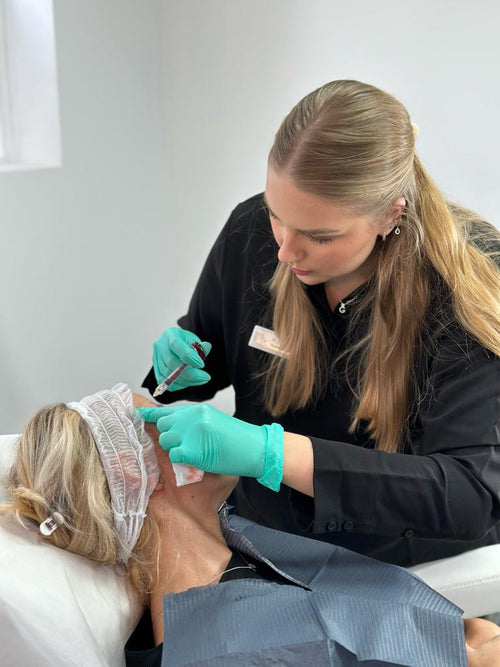
– Allergic reactions to the filler
– Nerve damage or numbness
It’s essential for patients to discuss any concerns or questions they have about pain perception after lip filler injections with their healthcare provider or dermatologist before undergoing treatment.
They can also take steps to minimize discomfort and promote healing, such as following post-treatment instructions carefully and avoiding strenuous activities for a few days after the procedure.
Short-Term Pain and Swelling
Swollen Lips and Facial Discomfort
The short-term pain and swelling that often accompany lip fillers are common complaints among individuals who have undergone this cosmetic procedure.
Pain can range from mild to severe, with some people describing it as a dull ache, while others liken it to a sharp stinging sensation.
Swelling, particularly around the lips, is a normal response to the injection of fillers, but in some cases, it can be quite pronounced.
The swelling can range from mild puffiness to more severe, lumpy, or uneven swelling that may take several days to weeks to resolve.
Facial discomfort is another common side effect, which can include bruising, redness, and tenderness to the touch.
Some people may experience a sensation of pressure or fullness in the lips, while others may notice a slight numbness or tingling.
The severity of these symptoms varies from person to person, but in most cases, they are manageable with over-the-counter pain medication and self-care measures.
In some instances, patients may experience more severe side effects, such as difficulty speaking, eating, or swallowing, which can be uncomfortable and potentially embarrassing.
It’s worth noting that the level of discomfort can vary depending on several factors, including the type and quantity of fillers used, the skill level of the practitioner, and individual tolerance to pain and swelling.
Most patients find that the pain and swelling subside within a few days, although some may take longer to recover.
To alleviate discomfort, practitioners often recommend applying ice packs to the affected area, massaging the lips gently, and taking over-the-counter pain medication as needed.
In some cases, topical creams or ointments containing ingredients like arnica or vitamin K may be prescribed to help reduce swelling and promote healing.
It’s also common for patients to experience a temporary sense of numbness or tingling in the lips, which can be caused by the fillers spreading into surrounding nerves or tissues.
This sensation usually resolves on its own within a few days, but in some cases, it may take longer.
Overall, while short-term pain and swelling are unpleasant side effects of lip fillers, they are typically temporary and resolve on their own with proper care and self-care measures.
By understanding what to expect and how to manage these symptoms, patients can feel more confident and prepared for their procedure.
Lip filler injections can cause short-term pain and swelling at the injection site, which is a normal reaction to the body’s response to the foreign substance.
The level of discomfort can vary from person to person and depends on several factors, including the individual’s pain tolerance, the location and number of injections, and the type of filler used.
On average, people report feeling some stinging or pinching sensation during and immediately after the injection, similar to getting a shot. This discomfort is usually mild to moderate and lasts for only a few seconds to a minute.
After the initial injection, you may experience some swelling, redness, or bruising at the site of the filler. This can be more pronounced if you have fair skin or are prone to bruising easily.
The swelling typically peaks within 24-48 hours after the procedure and can last for several days. In the first few days, it’s normal to experience some sensitivity, tenderness, or numbness in the lips and surrounding areas.
However, in most cases, the discomfort associated with lip filler injections is manageable and subsides within a day or two. To alleviate any discomfort, topical creams or cold compresses can be applied to the affected area.
In some instances, swelling may persist for up to a week, but this usually resolves on its own as the body absorbs the filler.
It’s essential to note that certain factors can increase the likelihood of short-term pain and swelling, such as:
– Using a new or unfamiliar filler
– Having sensitive skin
– Undergoing multiple injections in one session
– Receiving the filler at home rather than in an established medical office
Following proper aftercare instructions provided by your injector can help minimize discomfort and swelling.
Additionally, taking over-the-counter pain medication or applying topical creams containing ingredients like arnica or peppermint oil may provide relief from any remaining discomfort.
In rare cases, some people may experience more severe reactions, such as inflammation, bleeding, or infection. If you experience persistent or excessive swelling, redness, or pain, it’s crucial to contact your injector for guidance and potential treatment.
Prolonged swelling of the lips and surrounding area is common, often persisting for several days after treatment (2).
The sensation of short-term pain and swelling associated with lip fillers can vary from person to person, but it’s generally manageable.
Pain after lip fillers typically lasts anywhere from a few hours to a day or two, with some people experiencing mild discomfort that can be easily masked by over-the-counter pain medications such as ibuprofen or acetaminophen.
Swelling, on the other hand, is a more common and noticeable side effect of lip fillers.
Prolonged swelling of the lips and surrounding area is common, often persisting for several days after treatment.
This can be frustrating, especially if you’re eager to show off your new smile or feel self-conscious about your appearance while the swelling heals.
However, it’s essential to note that this swelling is a normal part of the healing process and will typically subside on its own within 7-10 days.
In some cases, swelling may be more pronounced or longer-lasting due to individual factors, such as allergies, medication use, or underlying medical conditions.
It’s also worth noting that the severity of swelling can vary depending on the type and amount of filler used, as well as the skill level and experience of the practitioner administering the treatment.
Some people may experience more significant swelling, particularly if they have a history of bruising or are taking blood-thinning medications.
On average, the swelling will be most pronounced within 24-48 hours after treatment, and it’s usually at its worst by day 3 or 4.
After this, the swelling typically starts to subside, although it may take up to a week for the lips to return to their pre-injection shape.
During this time, it’s crucial to follow your practitioner’s aftercare instructions carefully, as this can help minimize discomfort and promote optimal healing.
This often includes applying ice packs or cold compresses to reduce swelling, avoiding strenuous activities, and taking regular breaks to rest the area.
By following these guidelines and being patient, you can ensure a smooth and successful recovery from lip fillers.
Short-term pain and swelling are common side effects of lip filler injections, particularly during the initial stages after treatment.
The level of discomfort can vary from person to person, but it’s usually mild to moderate and temporary. Some people may experience a dull ache or stinging sensation at the injection site, while others might feel a sharp pain that lasts for only a few seconds.
In most cases, the pain is confined to the specific area where the filler was injected, and it tends to resolve on its own within 15-30 minutes. In some instances, however, the pain can be more pronounced and may require additional management.
Swelling is another common issue that people experience after lip filler injections. This is usually due to the body’s natural response to the foreign substance being introduced into the skin. The swelling can range from mild to moderate and may take several days to resolve completely.
The severity of swelling depends on various factors, including the type of filler used, the individual’s overall health, and their response to the treatment. In some cases, the swelling can be quite noticeable, while in others it might be barely perceptible.
Factors that contribute to increased swelling include the size of the filler, the number of injections, and the location on the face. Areas with thinner skin, such as the lips, tend to swell more than other areas.
It’s essential to note that some people may experience more significant side effects than others, particularly if they have a history of allergic reactions or are taking certain medications that can increase bleeding risks.
In rare cases, short-term pain and swelling can be severe and prolonged. This might occur if the filler is not dissolved properly during the treatment process, leading to an adverse reaction or infection. In such instances, it’s crucial to seek medical attention promptly to address any complications.
Most lip filler side effects are mild and temporary, resolving on their own within a few days to weeks. However, it’s essential to follow post-treatment instructions carefully and attend scheduled follow-up appointments to ensure that the filler is dissolved properly and any potential issues are addressed early on.
In terms of pain management, doctors may recommend over-the-counter pain relievers such as ibuprofen or acetaminophen to help alleviate discomfort. In some cases, they might prescribe stronger medications or provide additional treatments to reduce swelling.
Swollen lips can be treated with cold compresses, topical creams, or oral medications to reduce inflammation and promote healing. It’s also essential to avoid strenuous activities, tight clothing, and certain foods that can exacerbate the swelling.
The duration of short-term pain and swelling can vary significantly depending on individual factors, such as filler type, injection location, and overall health. Generally, most people experience some level of discomfort or swelling in the first 24-48 hours after treatment, but this usually subsides within a few days to a week.
It’s essential for individuals considering lip filler treatments to be aware of these potential side effects and to discuss any concerns with their doctor before undergoing the procedure. By understanding what to expect, you can take necessary precautions to minimize discomfort and ensure the best possible outcome.
Long-Term Pain and Complications
Scarring and Nerve Damage
Lip fillers are a popular cosmetic treatment used to enhance the appearance of the lips by injecting hyaluronic acid, calcium hydroxylapatite, or other materials into the lip tissue.
While generally safe when administered properly, lip filler injections can cause various complications, some of which can be short-term and others that may persist long-term.
Short-term complications include swelling, bruising, redness, and inflammation at the injection site, as well as mild pain or discomfort.

Long-term complications, however, can significantly impact a person’s quality of life and self-esteem. One of the most common long-term complications of lip filler treatments is scarring.
Scarring occurs when the body reacts to the injected material and forms an immune response, causing inflammation and tissue damage. This can lead to the formation of a nodule or lump under the skin, which can be permanent.
Nerve damage is another potential long-term complication of lip filler treatments. The nerves in the face are sensitive, and injecting fillers too close to the nerve can cause numbness, tingling, or burning sensations.
Some people may experience persistent numbness, especially if the nerve is severely damaged or if the injection was administered multiple times at the same location.
Facial asymmetry is another long-term complication that can occur after lip filler treatments. If the fillers are not injected evenly or too aggressively, it can cause one side of the face to appear fuller than the other.
Changes in facial sensation and movement can also be a result of lip filler injections. Some people may experience difficulty speaking or eating due to numbness or weakness in the affected area.
Long-term scarring can lead to permanent disfigurement, affecting not only the appearance of the lips but also the surrounding skin. In severe cases, scarring can cause emotional distress and impact a person’s self-confidence.
Additionally, lip fillers can cause chronic pain in some individuals. This can be due to nerve damage or scarring, leading to ongoing discomfort or inflammation in the treated area.
Book a Dermal Filler Appointment with Dr. Laura Geige Now
It is essential to choose an experienced and qualified practitioner for lip filler treatments to minimize the risk of these long-term complications.
A comprehensive pre-treatment consultation, proper aftercare instructions, and careful technique can go a long way in reducing the risk of scarring, nerve damage, and other adverse effects associated with lip filler treatments.
Lip fillers are a popular cosmetic procedure used to augment the shape and size of the lips, but like any medical treatment, they can also come with potential risks and complications.
One of the most common long-term complications of lip fillers is scarring. When the filler material, usually made from hyaluronic acid or calcium hydroxylapatite, is injected into the skin, it can cause inflammation and irritation that can lead to the formation of a scar.
Another potential complication is the development of granulomas, which are abnormal growths of tissue that can form in response to the filler material. These granulomas can be painful and may require surgical removal.
Long-term pain is also a common complaint among individuals who have undergone lip filler procedures. This can be due to a number of factors, including the formation of nodules or lumps under the skin, which can cause discomfort and pain.
Some people may experience persistent swelling or redness in the treated area, which can be painful and uncomfortable. In severe cases, this swelling and redness can spread beyond the initial treatment area, leading to more extensive complications.
The use of lip fillers also carries a risk of infection, which can range from mild to severe. In some cases, an infected filler can cause significant pain and swelling, while in more serious instances, it can lead to abscesses or other systemic infections.
Another potential complication is the formation of hypertrophic scars, which are raised and irregularly shaped scars that can be painful and unsightly. These scars can take months or even years to resolve on their own.
Lip fillers can also cause changes in sensation, including numbness or tingling, particularly around the mouth and lips. In some cases, these changes can be permanent.
Long-term complications of lip filler procedures are also rare but potential, such as an allergic reaction to the filler material, which can range from mild symptoms like itching and hives to more severe reactions like anaphylaxis.
Another long-term complication is the migration or displacement of the filler material over time. This can occur due to natural processes like muscle contractions or changes in facial structure, leading to irregularities in lip shape or size.
It’s also worth noting that some fillers, such as those made from silicone, have been linked to more long-term complications like chronic inflammation and immune reactions.
Given these potential risks and complications, it’s essential for individuals considering lip filler procedures to carefully weigh the benefits against the potential drawbacks and discuss their concerns with a qualified healthcare professional or experienced cosmetic surgeon.
It’s also crucial to choose a reputable and licensed practitioner who uses high-quality filler materials and adheres to strict safety protocols to minimize the risk of complications and ensure optimal results.
Although rare, nerve damage or scarring can occur if the filler is not administered correctly, resulting in persistent pain or numbness (3).
Nerve damage or scarring can occur if the filler is not administered correctly, resulting in persistent pain or numbness.
This type of complication is relatively rare, but it can have a significant impact on a person’s quality of life.
Persistent pain or numbness can be caused by the body’s natural reaction to the filler, which can lead to inflammation and scarring in the affected area.
In some cases, nerve damage can occur if the filler is injected too close to a nerve, causing numbness, tingling, or burning sensations in the face or lips.
Scarring can also occur if the filler is not properly absorbed by the body, leading to lumps or bumps under the skin.
In addition to these physical complications, persistent pain or numbness can also have a psychological impact on a person, causing anxiety and stress about the treatment.
Some people may experience phantom pain, where they feel pain in an area that is no longer injured, even if the underlying cause of the pain has been treated.
The risk of nerve damage or scarring can be minimized by finding a qualified and experienced healthcare professional to administer the filler.
It’s also important to follow proper aftercare instructions to ensure that the filler is properly absorbed and integrated into the body, reducing the risk of complications.
In some cases, persistent pain or numbness may require additional treatment, such as steroid injections or physical therapy, to manage symptoms and promote healing.
It’s worth noting that not all lip fillers are created equal, and some may be more likely to cause complications than others.
For example, fillers made from hyaluronic acid, calcium hydroxylapatite, or poly-L-lactic acid are generally considered safe and effective, but there is still a risk of nerve damage or scarring.
On the other hand, fillers made from non-hyaluronic acid materials, such as collagen or silicone, may be more likely to cause complications due to their unique composition and potential interactions with the body’s natural tissues.
To minimize the risk of complications, it’s essential to do thorough research and find a qualified healthcare professional with experience administering lip fillers.
Additionally, it’s crucial to follow all aftercare instructions carefully and attend follow-up appointments as scheduled to ensure that any potential complications are caught and treated promptly.
Avoiding the use of expired or unsterilized fillers can also reduce the risk of nerve damage or scarring.
Furthermore, using multiple fillers at once can increase the risk of complications, so it’s essential to consult with a qualified healthcare professional to determine the best course of treatment for individual needs and goals.
By taking these precautions and finding a qualified healthcare professional, individuals can minimize the risk of nerve damage or scarring and enjoy optimal results from their lip filler treatment.
It’s also important to remember that while lip fillers are generally safe and effective, they may not be suitable for everyone, particularly those with certain medical conditions or concerns.
A study published in the British Journal of Plastic Surgery found that 1 in 100 patients experienced nerve damage after lip filler injections, requiring surgical intervention to correct (4).
Lip fillers have become increasingly popular in recent years as a non-surgical way to enhance the appearance of the lips, but like any medical procedure, they carry potential risks and complications.
One of the most significant concerns associated with lip filler injections is long-term pain and complications. A study published in the British Journal of Plastic Surgery found that 1 in 100 patients experienced nerve damage after lip filler injections, requiring surgical intervention to correct.
Nerve damage, also known as neuropathy, can cause numbness, tingling, or burning sensations in the lips, tongue, or face. In severe cases, it can lead to permanent scarring, disfigurement, or even loss of sensation in the affected areas.
Furthermore, lip filler injections can also lead to other complications such as infection, bleeding, or allergic reactions. These complications can range from mild to severe and may require additional medical attention, including antibiotics or surgery.
Additionally, some patients may experience changes in the appearance of their lips over time, which can be permanent. For example, lip fillers can cause the lips to become misshapen, uneven, or lumpy, leading to a less-than-desirable appearance.
The risk of these complications is often underestimated by patients who are considering lip filler injections. While some clinics and doctors may claim that the risks are minimal, it’s essential for patients to understand that there are potential long-term consequences to consider.
To minimize the risk of complications, it’s crucial for patients to choose a qualified and experienced doctor or clinic for their lip filler procedure. This includes ensuring that the doctor has a good reputation, uses high-quality products, and follows proper safety protocols.
Patients should also be aware of the potential side effects and complications associated with lip fillers and discuss these with their doctor before undergoing treatment. This will help them make an informed decision about whether lip filler injections are right for them.
It’s also worth noting that some patients may experience residual side effects from previous lip filler treatments, which can last for months or even years after the procedure. In some cases, these side effects can be permanent and require additional treatment to correct.
In summary, while lip fillers can provide temporary benefits, the potential long-term complications and risks associated with them should not be ignored. Patients should carefully consider these risks before undergoing a lip filler procedure and take steps to minimize the likelihood of complications.
Lip fillers are a popular cosmetic treatment used to enhance the appearance of the lips by injecting hyaluronic acid or other substances into the lip tissue.
However, like any other medical procedure, lip fillers can cause discomfort and pain during and after the treatment.
The level of pain from lip fillers varies from person to person and depends on several factors, such as the location of the injection, the type of filler used, and individual pain tolerance.
Some people may experience mild stinging or pinching sensations during the procedure, while others may feel more significant discomfort.
In some cases, lip fillers can cause temporary soreness, swelling, bruising, or bleeding at the injection site.
Long-term pain from lip fillers is relatively rare but can occur in some individuals.
According to studies, about 1-5% of people may experience long-term pain after lip filler injections.
The type of filler used can contribute to long-term pain. For example, calcium hydroxylapatite and poly-L-lactic acid fillers are associated with lower rates of long-term complications compared to hyaluronic acid fillers.
Other factors that may increase the risk of long-term pain from lip fillers include:
Injection technique: Improper injection techniques can cause damage to surrounding tissues, leading to chronic pain and inflammation.
Overfilling or underfilling: Injecting too much or too little filler can cause irritation, scarring, or other complications that may lead to long-term pain.
Allergic reactions: Some people may be allergic to the ingredients in lip fillers, which can cause chronic inflammation and pain.
Poor aftercare: Not following post-treatment instructions carefully can lead to complications, such as infection or scarring, which may cause long-term pain.
Complications from long-term pain caused by lip fillers can be severe and debilitating.
In rare cases, chronic pain from lip fillers can lead to:
Erosion of the lips: Repeated inflammation and irritation can cause the tissue in the lips to erode away.
Scarring: Chronic inflammation and poor healing can result in scarring, which can be permanent.
Infection: In rare cases, lip fillers can become infected, leading to serious complications, including abscesses or granulomas.
Granulomatosis: This is a chronic inflammatory condition that can cause the formation of nodules or tumors in response to foreign substances, such as lip fillers.
Other rare but serious complications from long-term pain caused by lip fillers include:
Arthritis: Some people may experience joint pain and inflammation in response to repeated injections or removal of filler material.
Tendinitis or bursitis: Inflammation of the tendons or bursae surrounding the lips can cause chronic pain and swelling.
It is essential to choose a qualified and experienced healthcare professional for lip fillers to minimize the risk of complications and long-term pain.
A thorough consultation, proper aftercare instructions, and follow-up appointments are crucial in ensuring a safe and successful treatment outcome.
Read more about Classy Pleasure here. Read more about Canniant here. Read more about Gifted Brits here. Read more about Live Your Vows here.

